
Water in the urban space and the health of residents
Water in the urban space and the health of residents Izabela Kupryś-Lipińska, Piotr Kuna Medical University of Lodz Iwona Wagner University of Lodz European Regional Centre for Ecohydrology under the auspices of UNESCO, Polish Academy of Sciences The processes of urbanization deprive cities of water and greenery and residents of a healthy living environment. Concrete-dominated space makes people more prone to cardiovascular diseases, obesity, depression, osteoarthritis, asthma and allergy. The lack of water and greenery in urban space is one of the significant causes of allergies which are currently the top health concern for Polish children and adults below the age of 30. The inclusion of bluegreen infrastructure in urban planning is one of the crucial preventive measures in the fight against the epidemic of lifestyle diseases. Blue-green infrastructure improves air temperature and humidity, reduces pollution, stimulates the human immune system, provides favourable conditions for outdoor activities, and consequently, helps maintain proper body weight, good physical endurance and optimum mental health. In this chapter we show how the inclusion of bluegreen infrastructure in the urban system helps to retain water and support the ecosystems’ ability to provide services by creating healthy urban space, thus improving the living conditions of residents and helping the city move closer to sustainable development. Keywords: asthma, allergies, diseases of affluence, blue-green infrastructure, water in the city, soil sealing Water in the urban space and the health of residents Introduction According to data from the Central Statistical Office of Poland, in the 21st century asthma and allergy have become the number one health problem for children and adults below the age of 30. The prevalence of these diseases has risen dramatically in recent years (figure 1). In the mid-1990s, asthma sufferers aged 13–14 years old, in Poznan constituted 2% of the city’s population, while in 2001–2002 this number had risen to over 5%. Prevalence rose from 2.3% to 6.8% in the same period in Krakow (Lis et al. 2003). In other words, disease morbidity in large cities more than doubled in less than a decade. A detailed data analysis for Lodz province (Lodzkie Voivodeship) where the prevalence of asthma and allergic rhinitis is around the national average (Kupryś-Lipińska et al. 2010) has revealed an approximately 3-fold difference in morbidity between the densely built city centre and green rural areas located 18 km away (figure 2). This phenomenon was confirmed by another study on the prevalence of asthma carried out in Lodz province in a group of adolescents aged 12–16 years old (Majkowska-Wojciechowska et al. 2007). Urbanization and health People live in a close relationship with nature. The rapid changes in the natural environment caused by the development of civilization exceed the body’s natural ability to adapt and are one of the main contributors to non-infectious chronic diseases, known as lifestyle diseases or the diseases of civilization. As residents have less and less everyday contact with nature, and neither the need, space or motivation to engage in physical activity, the risk of developing one of these diseases increases dramatically. Lifestyle diseases include cardiovascular diseases, diabetes, osteoarthritis, cancer, depression and other psychological disorders, as well as chronic respiratory diseases and allergies. The latter are largely attributed to the lack of water and diversified assemblages of indigenous plants in the urban space. 48 | Sustainable Development Applications no 5, 2014 12% 10% 8% 6% 1998-1999 11% 9% 8.6% +28% 5.4% 2006 11% +67% 4% 2% 0% children adults (3-16 years old) (>16 years old) children children adults (6-7 years old) (13-14 years old) (20-44 years old) Figure 1. Increased prevalence of bronchial asthma in Poland (based on Liebhart et al. 2007; Samoliński et al. 2009) Urban desiccation results from the uncontrolled spreading, high density of development and disproportionate expansion of grey infrastructure (traditionally designed buildings, streets, parking lots, sidewalks, concrete or asphalt yards) in comparison with green and blue infrastructure. Each and every decision to regulate the remaining semi-natural rivers or reservoirs in the city, to fill up or channelize a drainage ditch or wetland, carry out an investment at the expense of a green space, square, park, meadow or old orchard, to extend a street lane or sidewalk at the expense of streetside greenery or similar actions degrade the city’s natural system which acts as a natural air humidifier (we discussed this topic in the previous guidebook in this series called “Nature in the city. Solutions”). These might seem local actions of no significance to the functioning of the city as a whole, however, their widespread application alters the conditions for water cycling and urban greenery, and has serious health implications for city dwellers. The effect of excessive urban desiccation is further intensified by traditional water management methods oriented at draining off stormwater as quickly as possible. Increased prevalence of allergic diseases and bronchial asthma Allergic diseases including most cases of asthma result from the immune system’s abnormal response to allergens: substances (usually proteins) commonly present in the environment that are harmless to healthy people. In the early 20th Izabela Kupryś-Lipińska, Piotr Kuna, Iwona Wagner Prevalence of asthma 20% Prevalence of seasonal allergic rhinitis 18.4%* 20% 13.2% 15% 10% 10% 5% 0% 6.0% children 4.2% 13.2% 10.1% 6.7% 5% 0% adults city centre 16.1%* 15% rural area children adults (*indicates values with statistical significance, p < 0.05) Figure 2. Comparison of the prevalence of asthma and allergic rhinitis in the urban and rural population in Lodz province (based on Kupryś-Lipinska et al. 2009) century allergies were rare (affected less than 1% One of the unquestionable manifestations of of the population) and poorly known (Kupryś and environmental changes is fast urban development Kuna 2003). However, in the second half of the that has the most pronounced effect on the living 20th century this proportion rose even up to 40% conditions of societies. Moreover, it is a process that is some communities. According to the World affects vast numbers of people: while in the 1960s Health Organization (WHO), there are cur- only 25% of the global population lived in cities, rently over 400 million sufferers of currently this number is approachallergic rhinitis and over 300 mil- Epidemiological studies ing 55%. Therefore, the causes of inlion sufferers of bronchial asthma have shown environmental creased morbidity are being sought around the globe (Bousquet et al. factors play a key role in the among the factors associated with the 2007). Which leads to the question: development of allergic di- advancement of civilization. Studseases and asthma. Why the change? ies show that allergies and asthma Genetic factors are one of the are most prevalent (affect even up most important contributors to the increased mor- to 40% of the population) in highly developed bidity. However, genes are not the only factor to countries with a western lifestyle, especially in resiblame for this sudden and universal increase in dents of large cities. Disease incidence is 15 times the prevalence of asthma and allergy around the higher than in developing countries (ISAAC 1998; globe. Genomic changes occur slowly and their ECRHS 1996). influence in large populations can be observed only after generations. Meanwhile, epidemiological studies have shown environmental factors play Causes of high allergy and a key role in the development of allergic diseases bronchial asthma morbidity and asthma. These factors can act in a number of in cities ways, e.g. by activating genes that are responsible for allergy or by facilitating the contact of allergens The causes of the high prevalence of lifestyle diswith immune cells, consequently damaging the eases including bronchial asthma and allergy among natural protective barrier of the skin and mucosa. urban residents are complex, but urbanization is The increased risk of developing these diseases undoubtedly an aggravating factor (figure 3). may also result from increased allergen concentrations, their prolonged action, or the introduction Higher temperatures and reduced biodiversity of new allergens in the environment or changes Cities that are built up with grey infrastructure and in their allergenicity (i.e. ability to trigger an al- deprived of water and greenery are grappling with lergic reaction). the urban heat island effect. The increased coverage Sustainable Development Applications no 5, 2014 | 49 Water in the urban space and the health of residents of impervious surfaces associated with dense development and road networks coupled with the use of easily heating materials contribute to the occurrence of extremely high temperatures in the summer and significantly increased temperatures (compared with suburban areas) in the winter. Differences in temperature between the city and areas located beyond its boundaries can be staggering and are affected by climate zone, city size, development density, 3-dimensional structure, and level of economic development. Studies in over 400 large cities worldwide have shown that the urban heat island effect is responsible for an annual increase in air temperatures of about 1.5 (± 1.2)°C during the day and about 1.1 (± 0.5)°C at night (Peng et al. 2012). However, at the level of individual cities this process is much more diversified. For instance, the temperature difference between the city centre of Lodz and its suburbs hovers around 2–4°C most of the time, occasionally reaching 8°C, while the maximum observed difference was even 12°C (Kłysik and Fortuniak 1999). Persistent high temperatures can have a negative effect on human health, exacerbating health problems, causing malaise and even premature death, especially in individuals suffering from chronic cardiovascular or respiratory diseases, as well as in infants, young children, the elderly, and in the socially excluded and living alone. The most dangerous situation occurs during hot summers in parts of the city without greenery (large squares, parking lots, extensive road and residential infrastructure with no green space). Daytime temperatures in such spaces can reach 40–50°C, making it impossible to stay outside or go about daily activities. It is estimated that heat waves in Europe in 2003 were responsible for at least 52,000 premature deaths (EPI 2006), predominantly in overheated cities. The small presence of blue-green infrastructure contributes to this effect significantly by further impairing the city’s ability to adapt to global climate change (EEA 2012). Due to the increased temperatures, plant pollination periods are longer and intensified, especially in undiversified natural systems. The risk of disease can be exacerbated in urban space that is depleted of 50 | Sustainable Development Applications no 5, 2014 indigenous species and characterized by poor biodiversity, e.g. where only one or two species are present in large numbers in an area. Allergy-causing species, especially when growing densely and without other plants, have a stronger effect on the human body. It is also worth remembering that higher temperatures increase the expansion of new plant species and the chances of survival for exotic species. The latter should not be used in cities as they may bring about new, previously unknown allergies (Carinanos and Casares-Porcel 2011). Decreased air humidity and atmospheric air pollution Another phenomenon associated with the urban heat island effect is decreased air humidity. In Lodz, the differences in relative humidity between the city centre and its surroundings tend to reach 20–30%, with the highest recorded differences around 40% (Fortuniak et al. 2006). Desiccated air affects human health in two ways; firstly by causing dryness and damage to the skin and mucosa, making it easier for bacteria, viruses and allergens to have a detrimental effect on the body. Secondly, particulates and pollutants are more easily suspended in dry air and hence the increased risk of disease. Atmospheric pollution increases the prevalence of allergies. Elevated concentrations of SO2, O3 and small particulate matter (PM10) exacerbate the symptoms of asthma. Pollution with organic compounds, oxides and ozone, which is related to car exhaust fumes, especially from diesel engines, is typical for large cities in highly developed countries and also contributes to the development of allergies. The incidence of pollinosis in Japan was found to be higher in individuals living close to highways (with comparable concentrations of cedar pollen in the atmospheric air) (Ishizaki et al. 1987). In Germany, the prevalence of pollinosis, symptoms of allergic disease and allergy to pollen, dust mites, cat allergens and milk were found to increase with atmospheric air levels of nitrogen (NO2) (Kramer et al. 2000) which reflect the degree of air pollution from car exhaust fumes. The negative effect of pollutants consists of damaging the airway epithelium. This facilitates Izabela Kupryś-Lipińska, Piotr Kuna, Iwona Wagner URBANIZATION increasingly standardized landscape, plants superseded, decreased biodiversity, reduced coverage of areas that retain water in the landscape, urban desiccation, river regulation, development and degradation of valleys, elimination of reservoirs Increased proportion of impervious surfaces: concrete, asphalt, buildings Lack of attractive space for recreation and outdoo physical activity Urban heat island: higher temperatures, lower humidity, heat waves Limited human contact with saprophytic bacteria Urban lifestyle resulting from limited physical activity Extended and intensified pollination periods, increased air pollution Lack of appropriate stimulation of the immune system Risk of obesity Greater exposure to pollen (allergens) compared with the natural environment Increased risk of allergy and asthma as well as cardiovascular diseases, obesity, depression, osteoarthritis and other chronic diseases Figure 3. Impact of urbanization on the incidence of bronchial asthma, allergy and other lifestyle diseases the penetration of allergens and their contact with the immune system, and leads to inflammation of the respiratory tract. Chemically active compounds can also act on allergens directly by changing the structure of proteins, thereby contributing to their increased ability to trigger an allergic reaction. Additionally, pollutants may cause plants to produce proteins that have protective functions for the plant but are strong allergens for humans. Lack of contact with microorganisms The results of epidemiological studies point to a strict correlation between the incidence of asthma and the development of grey infrastructure (Rodriguez et al. 2011; von Hertzen and Haahtela 2006). Surface sealing, river regulation, the elimination of green spaces and aquatic ecosystems are all activities that reduce the humidity of the urban environment. Consequently, the numbers of microorganisms living in the air, water and soil declines as these are unable to survive the conditions of urban drought. This in turn causes qualitative and quantitative changes in bioaerosols: a suspension of airborne microorganisms and the products of their decomposition, as well as other components of living organisms from the soil and air. This type of environment does not create healthy living conditions for urban residents. Ac cording to the hygiene hypothesis, allergy (which is also the primary cause of asthma) results from dysfunctions of the immune system. The system’s normal development occurs during a child’s contact with pathogenic microbes. Limited exposure or the lack of it, e.g. due to excessive cleanliness, food sterilization and the widespread use of antibiotics contributes to the development of allergy and asthma (Kuna and Kupryś-Lipińska 2010). Saprophytic microorganisms (bacteria and fungi) in the external environment are equally important to human health: due to their diversity and large numbers they may be playing a key role in the development of allergy. The crucial role of external bacteria in the development of the immune system was confirmed by studies on the impact of the rural environment on the prevalence of allergy and asthma. Children born in rural households were shown to develop these diseases less often (Filipiak et al. 2001), especially when the households included animal farms which increase the number of microbes in the environment. The risk of developing allergy and bronchial asthma in people who migrate from rural to urban areas (more deprived from the point of view of microbiology) increases to levels found in individuals born in cities, suggesting a strong influence Sustainable Development Applications no 5, 2014 | 51 Water in the urban space and the health of residents of urbanization-related factors on human health, irrespective of exposure time. Urban lifestyle In addition to the dense development in cities depleted of attractive green spaces and water, the increasing popularity of a sedentary lifestyle and spending time mostly indoors are also detrimental to health and lead to restricted contact with microbes in the natural environment. People living in multi-family housing have significantly less contact with microbes than those living in single-family houses or outside of the city that have more opportunities and possibilities of spending time outdoors. Limited physical activity is also responsible for an increased risk of cardiovascular diseases (Drygas et al. 2000) and obesity, another plague of civilization with serious health implications. Obese individuals are at greater risk of developing diabetes, cardiovascular diseases, osteoarthritis, depression and bronchial asthma. In the case of asthma, this effect is directly correlated with body mass index (BMI): in individuals whose BMI exceeds 25 (overweight and obese), annual asthma incidence increases by over 50% compared with people with a normal BMI score (Beuther et al. 2007). Blue-green infrastructure in shaping a healthy city Urban development is an inevitable consequence and the driving force of the advance of civilization. It is economically, socially and culturally beneficial and desirable. The challenge, however, is to guide this development so that it has a positive effect on all areas of life, including the quality of the natural environment and the associated human health impacts. This is where integrated urban management comes into play (cf. chapter on integrated management: Krauze and Wagner in this volume) where both the infrastructural needs of the growing population, and quality of life and health-related needs are met. Shaping the natural environment in cities is a particular challenge: the space available for ecosystems is severely limited due to the significant land 52 | Sustainable Development Applications no 5, 2014 transformations caused by the increasing density of grey infrastructure and intensive human activity. At the same time, high prices of land create strong pressure for dense development. As a direct consequence, water cycling in the landscape is disturbed, (bio)diversity of the urban natural system decreased and ecosystem continuity lost. These effects lead to the dysfunction of the natural system, limiting ecosystems’ ability to provide services that are essential for urban residents’ health. Corrective measures should focus on restoring this ability. Water retention in the city: improved air humidity and quality Water retention in the city is the key to a healthy living environment. It may be increased via planning tools (greater proportion of biologically active areas, surface de-sealing, creating more diverse and interlinked blue-green infrastructure) combined with the best practices in stormwater management, ecohydrological solutions and ecosystem biotechnology (cf. chapter on technical solutions: Wagner and Krauze in this volume). This helps decrease air temperatures, increase its humidity and improve its quality. The results of numerous international studies show that lower air temperatures and higher humidity lead to reduced concentrations of harmful particulates, especially PM10: a mixture of very small particles (less than 10µm in diameter) that may contain toxic substances such as polycyclic aromatic hydrocarbons, e.g. benzo(a)pyrene, heavy metals, dioxins and furans. A study in the Romanian city of Drobeta-Turnu Severin revealed that the irritant effect of these pollutants on the respiratory tract is so dramatically reduced during humid weather that it translates into significantly less hospital admissions for exacerbation of chronic respiratory diseases (Leitte et al. 2009). In cases where the use of a blue-green infrastructure system is impossible, the presence of at least some greenery in densely built areas can have a positive local effect whose importance for neighbouring residents cannot be overestimated. A single tree can transpire up to 500 litres of water a day, acting as a local air humidifier. However, the mere presence of trees does not improve microclimate unless they are provided with sufficient amounts of water. In the Izabela Kupryś-Lipińska, Piotr Kuna, Iwona Wagner face of drought, plants stop transpiring water into the atmosphere (Wagner et al. 2013). Therefore, it is essential to provide the root system of trees with access to water and this is a potential application for the valuable stormwater retained in the urban space. The presence of plants also improves air quality. Filtration capacity depends primarily on the leaf surface area, which explains why trees are much more efficient at capturing pollutants than low shrubs or lawns. Notably, sparse tree groupings which allow the free flow of air and tree alleys are more efficient than single trees. The best outcomes can be achieved through the incorporation of diversified, incremental plant assemblages (e.g. lawn + shrubs + trees). A park can filter even up to 85% of pollutants, and a tree-lined roadway – up to 70% (Bernatzky 1983). such as cotoneaster, boxwood, dogwood, forsythia, quince, barberry and hawthorn; and climbing plants such as the common ivy, five-leaved ivy and silver lace vine. Apart from their beneficial effect on human health, these species are also better adapted to local conditions and therefore more likely to function properly in conditions of urban stress due to their ability to regenerate from the natural gene pools of phytocenoses near the city. Preserving natural system (bio)diversity: reducing the amount of allergens and stimulating the immune system Diversity is a crucial element of blue-green infrastructure design in urban strategies aimed at disease prevention, and covers the species, ecosystems and landscape forms of a city. Diversified natural forms that retain their natural character (to the extent possible) support the resistance of the urban natural system in conditions of stress and changing external factors such as climatic changes and anomalies. In turn, a functional natural system reinforces human resilience: contact with nature promotes mental and physical regeneration and the presence of microbes in the environment stimulates the immune system. In parts of the city where plantings are made it is vital to enhance biodiversity and plant indigenous species. Ensuring diversity in terms of taxonomy (different species and genera), morphology (diversified sizes and shapes) and biology (different pollination strategies and periods) can be a good strategy. High quality natural systems are based on indigenous (i.e. typical for the region) species and phytocenoses. It is also advisable to plant trees which do not tend to cause allergy, so the recommended species for Polish cities would include: hornbeam, maple, elder, spruce, pine, as well as jasmine, horse-chestnut, rowan, fir, larch, female (pollen-free) poplar, willow and ash trees; shrubs Preserving the continuity of the natural system: better mental and physical regeneration To preserve the continuity of the natural system, efforts should be made to ensure that its elements are distributed as evenly as possible throughout the city and interconnected with physical, spatial links. This applies to both semi-natural and natural aquatic and land ecosystems, as well as artificial elements with environmental/social functions, such as: ecohydrological solutions, stormwater management-related structural solutions, streetside greenery, community gardens, cemeteries, parks etc. One example of this approach has been described in the first guidebook in this series: the Blue-Green Network concept for the city of Lodz (Zalewski et al. 2012; Wagner et al. 2013). The functioning of ecosystems that are interconnected and form a network (natural system) is much better than in isolation. This is because the natural system’s capacity for long-term water retention and its slow release is improved, as well as its performance in extreme conditions, e.g. during extended periods of drought and in high temperatures, which is precisely when ecosystems’ impact on urban microclimate is of greatest value to city residents. Preserving natural continuity improves the attractiveness of urban space and the availability of green areas to residents. It also creates opportunities for outdoor physical activity and helps develop the need for this and change health behaviour habits. The habit of resting through recreation and sports enhances mental and physical regeneration and helps maintain normal body weight, good physical endurance and mental health. It is also a way of preventing the most common chronic diseases associated with urbanization-induced lifestyle changes and the effects of the urban social environment, Sustainable Development Applications no 5, 2014 | 53 Water in the urban space and the health of residents i.e. obesity, diabetes, cardiovascular diseases, osteoarthritis, depression, neurotic conditions, asthma and allergy. The connections between green spaces allow the development of alternative forms of transportation, encouraging increased physical activity and contributing to the reduction of harmful car emissions. Data from Atlanta shows that the temporary reduction in traffic intensity by 22.5% at the time of the Olympic Games resulted in a reduction in the number of asthma-related hospital admissions by 41.6%, while not affecting the number of admissions for other reasons ( Jackson and Kochtitzky 2001). Natural capital in sustainable urban development The current recommendations for the treatment of many chronic diseases (including allergy and bronchial asthma) include custom-tailored therapy that is adjusted to the patients’ needs, possibilities and expectations. This approach yields good treatment results at the individual level. However, systemic solutions are required to reverse the unfavourable urban trends. The creation of an urban environment that is truly friendly to human health seems to be References Bernatzky, A., 1983. The effects of trees on the urban climate. In: Trees in the 21st century, Berkhamster: Academic Publishers, pp. 59–76. Beuther, D.A., Sutherland, E.R., 2007. Overweight, obesity, and incident asthma: a meta-analysis of prospective epidemiologic studies. American Journal of Respiratory and Critical Care Medicine, 175(7), pp. 661–666. Bousquet, J., Dahl, R., Khaltaev, N., 2007. Global alliance against chronic respiratory diseases. Allergy, 62(3), pp. 216–223. Carinanos, P., Casares-Porcel, M., 2011. Urban green zones and related pollen allergy: a review. Some guidelines for designing spaces with low allergy impact. Landscape and Urban Planning, 101, pp. 205–214. Drygas, W., Kostka, T., Jegier, A., Kuński, H., 2000. one of the most important preventive measures in the fight against the epidemics of non-infectious chronic respiratory diseases and many other diseases of civilization. A healthy urban environment is also the backbone of sustained and sustainable urban development that is based on the uniform development of economic, social and natural capital. Apart from its intrinsic value, natural capital contributes to the shaping of a healthy society (enhances social capital). This in turn increases competitiveness and satisfaction and helps equalize development opportunities; in combination with attractive green space these are the features of an investor and employer-friendly city (enhanced economic capital). The practicalities of the concept of natural capital are associated with blue-green infrastructure. With integrated planning, it can unite a city’s structure and functions. This is only possible, however, if blue-green infrastructure is genuinely incorporated in the planning and design as well as investment and revitalization processes, on a par with grey infrastructure, from the very early stages. The health of future generations growing up in the cities designed by us today argues for this kind of approach. men. International Journal of Sports Medicine, 21(4), pp. 235–241. ECRHS, 1996. Variations in the prevalence of respiratory symptoms, self-reported asthma attacks, and use of asthma medication in the European Community Respiratory Health Survey. European Respiratory Journal, 9(4), pp. 687–695. EEA, 2012. Urban adaptation to climate change in Europe. Challenges and opportunities for cities together with supportive national and European policies, Luxembourg: Office for Official Publications of the European Union. EPI, 2006. Setting the record straight — more than 52,000 Europeans died from heat in summer 2003. Earth Policy Institute webpage <www.earth-policy.org>. Filipiak, B., Heinrich, J., Schafer, T., Ring, J., Wichmann, H.-E., 2001. Farming, rural lifestyle and atopy in adults Long-term effects of different physical activity levels from southern Germany – results from the MONICA/ on coronary heart disease risk factors in middle-aged KORA Augsburg study. Clinical & Experimental Allergy, 54 | Sustainable Development Applications no 5, 2014 31(12), pp. 1829–1838. Izabela Kupryś-Lipińska, Piotr Kuna, Iwona Wagner ľFortuniak, K., Kłysik, K., Wibig, J., 2006. Urban– rural contrasts of meteorological parameters in Lodz. Theoretical and Applied Climatology, 84(1–3), pp. 91–101. ISAAC, 1998. Worldwide variation in prevalence of symptoms of asthma, allergic rhinoconjunctivitis, and atopic eczema. Lancet, 351(9111), pp. 1225–1232. Ishizaki, T., Koizumi, K., Ikemori, R., Ishiyama, Y., Kushibiki, E., 1987. Studies of prevalence of Japanese cedar pollinosis among the residents in a densely cultivated area. Annals of Allergy, Asthma & Immunology, 58(4), pp. 265–270. Jackson, R.J., Kochtitzky, C., 2001. Creating a healthy environment: the impact of the built environment on public health, Washington, D.C.: Sprawl Watch Clearinghouse. Kłysik, K., Fortuniak, K., 1999. Temporal and spatial characteristics of the urban heat island of Łódź, Poland. Atmospheric Environment, 33, pp. 3885–3895. Kramer, U., Koch, T., Ranft, U., Ring, J., Behrendt, H. 2000. Traffic-related air pollution is associated with atopy in children living in urban areas. Epidemiology, 11(1), pp. 64–70. Kuna, P., Kupryś-Lipińska, I. 2010. Astma oskrzelowa. In: Antczak, A., ed., Wielka interna – Pulmonologia (part II), Warszawa: Medical Tribune Polska, pp. 133–134. Kupryś, I., Kuna, P., 2003. Epidemics of allergic diseases: a new health problem in the modern world. Polski Merkuriusz Lekarski, 14(83), pp. 453–455. Kupryś-Lipińska, I., Elgalal, A., Kuna, P., 2009. Urban-rural differences in the prevalence of atopic diseases in the general population in Lodz Province (Poland). Postępy Dermatologii i Alergologii, XXVI(5), pp. 249–256. Kupryś-Lipińska, I., Elgalal, A., Kuna, P., 2010. The underdiagnosis and undertreatment of asthma in general population of the Lodz Province (Poland). Pneumonologia i Alergologia Polska, 78(1), pp. 21–27. Leitte, A., M., Petrescu, C., Franck, U. et al., 2009. Respiratory health, effects of ambient air pollution and its modification by air humidity in Drobeta-Turnu Severin, Liebhart, J., Malolepszy, J., Wojtyniak, B. et al., 2007. Polish Multicentre Study of Epidemiology of Allergic Diseases. Prevalence and risk factors for asthma in Poland: results from the PMSEAD study. Journal of Investigational Allergology and Clinical Immunology, 17(6), pp. 367–374. Lis, G., Breborowicz, A., Cichocka-Jarosz, E. et al., 2003. International Study of Asthma and Allergies in Childhood. Increasing prevalence of asthma in school children – ISAAC study (International Study of Asthma and Allergies in Children). Pneumonologia i Alergologia Polska, 71(7–8), pp. 336–343. Majkowska-Wojciechowska, B., Pełka, J., Korzon, L. et al., 2007. Prevalence of allergy, patterns of allergic sensitization and allergy risk factors in rural and urban children. Allergy, 62(9), pp. 1044–1050. Peng, S., Piao, S., Ciais, P. et al., 2012. Surface urban heat island across 419 global big cities. Environmental Science & Technology, 46(2), pp. 696–703. Rodriguez, A., Vaca, M., Oviedo, G. et al., 2011. Urbanisation is associated with prevalence of childhood asthma in diverse, small rural communities in Ecuador. Thorax, 66(12), pp. 1043–1050. Samoliński, B., Sybilski, A.J., Raciborski, F. et al., 2009. Występowanie astmy oskrzelowej u dzieci, młodzieży i młodych dorosłych w Polsce w świetle badania ECAP. Astma Alergia Immunologia, 14(1), pp. 27–34. Wagner, I., Krauze, K., Zalewski, M., 2013. Blue aspects of green infrastructure. Sustainable Development Applications, 4, pp. 145–155. von Hertzen, L., Haahtela, T., 2006. Disconnection of man and the soil: reason for the asthma and atopy epidemic? Journal of Allergy and Clinical Immunology, 117(2), pp. 334–344. Zalewski M., Wagner, I., Fratczak, W., Mankiewicz-Boczek, J., Parniewki, P., 2012. Blue-green city for compensating global climate change. The Parliament Magazine, 350, pp. 2–3. Romania. Science of the Total Environment, 407, pp. 4004–4011. Sustainable Development Applications no 5, 2014 | 55
© Copyright 2025
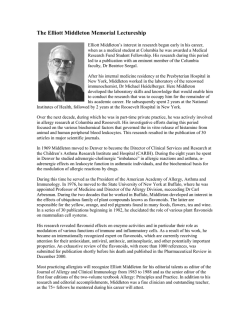
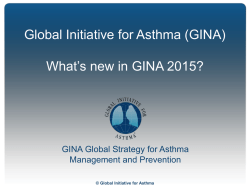
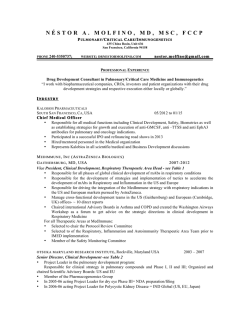
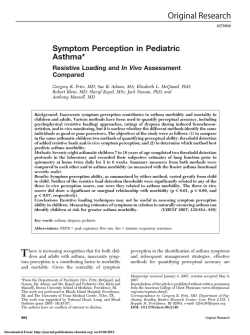
![1 [Billing Code: 4140-01-P] DEPARTMENT OF HEALTH AND](http://s2.esdocs.com/store/data/000481678_1-ace6079cd3a136722e5d2fb9067d8877-250x500.png)
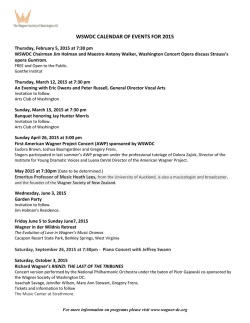
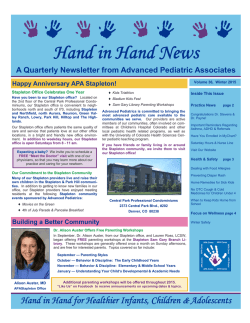
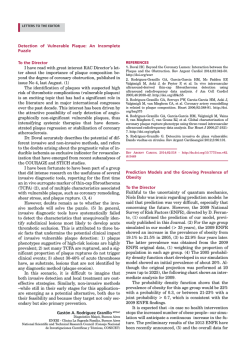
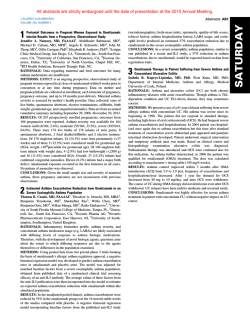
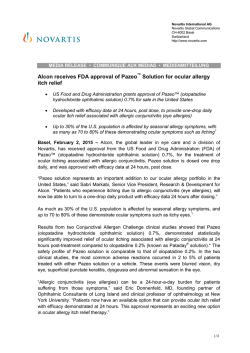
![Download [ PDF ] - journal of evolution of medical and dental sciences](http://s2.esdocs.com/store/data/000494682_1-a05d094f9efefa40e28645027f3e090c-250x500.png)